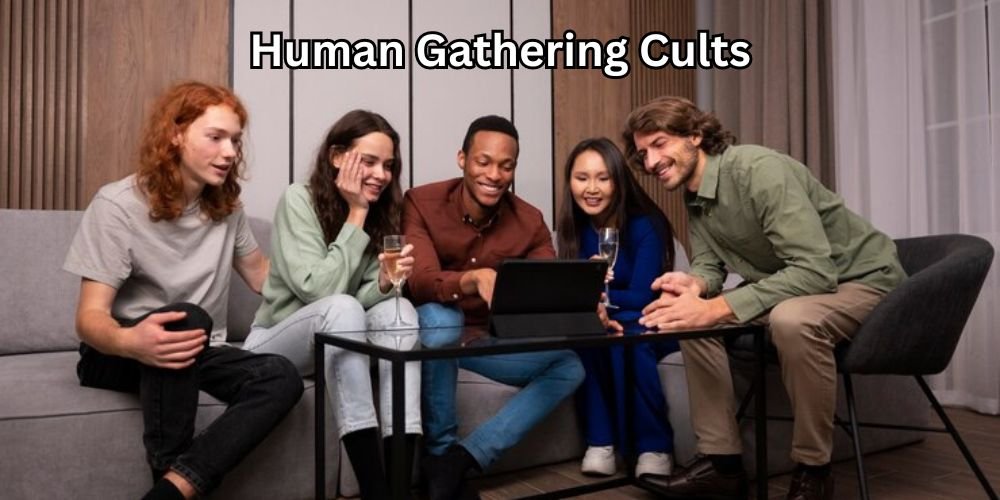The Fascinating World of Human Gathering Cult
What picture does the word “cult” evoke for you? It could be something mysterious. However, what really is a Human Gathering Cult? These groups, often shrouded in secrecy, have a unique way of influencing and shaping the lives of their members. Understanding them is crucial, not just for academic curiosity but for societal awareness. Let’s dive into this intriguing subject.
Historical Background
Human gathering cult are not a modern phenomenon. They have existed for centuries, manifesting in various forms and influencing society. Early examples include the Dionysian mysteries of ancient Greece and the Mithraic cults of ancient Rome. These groups provided a sense of community and belonging and evolved into more structured organizations.
Characteristics of Human Gathering Cult
So, what makes a group a cult? Typically, cults have a charismatic leader, unique beliefs, and rituals that distinguish them from mainstream society. These traits create a solid internal bond among members, often leading to an “us versus them” mentality.
Types of Human Gathering Cult
Cults can be broadly categorized into religious, political, and social cults. Religious cults often revolve around a specific doctrine or divine figure. Political cults, on the other hand, centre around ideologies and leaders, while social cults may focus on lifestyle or communal living practices.
Psychological Appeal
Why do people join cults? It’s a complex interplay of psychological needs and external influences. People often seek a sense of purpose, belonging, and identity. Charismatic leaders play a pivotal role, using their influence to attract and retain followers.
Case Studies of Notable Human Gathering Cult
Let’s look at some famous examples. The People’s Temple, led by Jim Jones, ended tragically with a mass suicide in Jonestown. Heaven’s Gate, led by Marshall Applewhite, believed in extraterrestrial salvation, also ending in mass suicide. The Manson Family, under Charles Manson, engaged in violent acts in the late 1960s. These case studies highlight the powerful impact of cult leadership and ideology.
The Role of Rituals and Symbols
Rituals and symbols are vital to cults, reinforcing beliefs and fostering community. Rituals can range from simple daily practices to elaborate ceremonies, while symbols often serve as a visual representation of the cult’s core beliefs.
Human Gathering Cult Effect on Society
The impact of cults on society can be both positive and negative. On the positive side, they can provide community and support for their members. However, negative impacts include psychological manipulation, social isolation, and, sometimes, criminal activities.
Cults vs. Mainstream Religions
Distinguishing cults from mainstream religions can be tricky. Key differences lie in the level of transparency, acceptance of dissent, and the degree of control exerted over members. While both may share rituals and symbols, cults often exhibit extreme exclusivity and control.
How to Identify a Cult?
Identifying a cult involves looking for warning signs such as authoritarian leadership, isolation from family and friends, and an emphasis on absolute obedience. Experts advise being vigilant and seeking professional help if you suspect someone is involved in a cult.
Personal Stories from Former Cult Members
Hearing from those who have left cults can be eye-opening. Many describe their experiences as a journey from darkness to light, sharing their emotional and psychological challenges. These stories are a testament to human resilience and the power of self-discovery.
Deprogramming and Rehabilitation
Leaving a cult is just the beginning. Deprogramming and rehabilitation are critical for former members to rebuild their lives. This involves professional counselling, support groups, and often, reconnecting with estranged family and friends.
Media Representation of Cults
Movies, documentaries, and books have significantly shaped public perceptions of cults. While some portrayals are sensationalized, others provide a more nuanced view, helping to educate and inform the public about the realities of cult life.
Legal and Ethical Considerations
The legal landscape surrounding cults is complex. Issues such as freedom of religion, individual rights, and public safety come into play. Balancing these factors often creates ethical dilemmas, making it challenging for policymakers and law enforcement.
FAQs about human gathering cult
Q: What are the signs that someone is in a cult?
Q: Can cults be beneficial in any way?
Q: How can I help someone leave a cult?
Q: Are there cults operating today?
Q: What resources are available for former cult members?
Conclusion
Human gathering cult are a multifaceted phenomenon that blends psychology, sociology, and sometimes criminal behaviour. Understanding them is crucial for recognizing their impact on individuals and society. Whether viewed through history, psychology, or personal stories, the study of cults offers valuable insights into human behaviour and social dynamics.
If you gained new insights from this article, explore our blog, Gimkit, for more enlightening content.
Read More Trending Topic:
- The Ultimate Guide to Pikruos: Everything You Need to Know
- Oral Surgery Specialists: The Key To A Pain-Free Smile
- How to Select an Oral Surgery Specialist: Things You Should Keep in Mind
- Decoding the Meaning of 2131953663: What Does it Symbolize?
- H5 Firekirin: An In-Depth Guide to the Thrilling Game
Share this content:







Post Comment